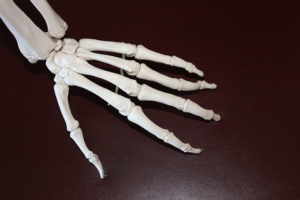Living with Rheumatoid Arthritis: 13 Tips for Living Well – Healthline
1. RA can be an invisible disease in the early stages that you may need to explain to loved ones
RA is caused by underlying inflammation, which can affect your physical and emotional health such as:
It’s important to be explicit about your condition with friends and loved ones bec…….

1. RA can be an invisible disease in the early stages that you may need to explain to loved ones
RA is caused by underlying inflammation, which can affect your physical and emotional health such as:
It’s important to be explicit about your condition with friends and loved ones because they may not be able to “see” what you’re going through.
By explaining your condition and your needs, they may also be better able to help support you.
2. RA may affect you differently as you age
A 2017 research review showed that while RA is most common in women ages 25 to 45, the condition can develop in males and females of all ages.
Although RA is primarily characterized by pain and inflammation in your joints, you may develop different levels of progression as you get older —such changes may be more significant if you are originally diagnosed with RA in your 20s or 30s.
For example, you may find that you:
- need more time to complete daily tasks due to fatigue
- tend to experience forgetfulness more often
- need more sleep, perhaps by going to bed earlier than you used to
- require more rest after a day out
- are losing weight, even if you’re not trying to
3. It’s possible to have both RA and lupus at the same time
Lupus is another type of autoimmune condition and it is possible to have RA and lupus symptoms occur together, a so-called overlap syndrome. Both conditions have similar joint symptoms, but lupus can also cause:
- skin rashes or ulcers
- kidney problems
- decreased blood cells and platelets
Both RA and lupus are inflammation-based, so the treatments may be similar.
However, it’s possible for RA symptoms to improve and for lupus to flare up. It’s important to schedule appointments with your doctor for regular exams and blood work, as lupus may be more difficult to identify.
4. It’s also possible to have fibromyalgia
Both fibromyalgia and RA have similar symptoms, including fatigue and pain. However, RA also causes joint pain and inflammation and can be treated with different classes of medications.
Fibromyalgia, on the other hand, may cause constant pain. Also, while RA is a progressive autoimmune condition, fibromyalgia is a chronic condition that doesn’t necessarily worsen over time.
Having RA can increase your risk of developing fibromyalgia too. According to the Arthritis Foundation, researchers estimate that more than 20 to 30 percent of people have fibromyalgia and RA together. </…….
Source: https://www.healthline.com/health/rheumatoid-arthritis/living-with-rheumatoid-arthritis







